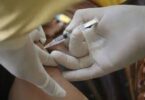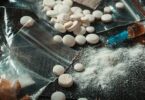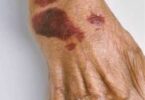F.P. Report
ISLAMABAD: International Childhood Cancer Day (ICCD) is celebrated around the world each year on February 15th. This year’s campaign focuses on ‘No More Pain and No More Loss’ for children with cancer and their families.
According to the World Health Organization (WHO) each year, more than 300,000 children, ages birth to 19 years are diagnosed with cancer around the world. Approximately 8 in 10 of these children live in low and middle-income countries where their survival rate is often poor. These views were expressed by Dr. Saadiya Javed Khan, Consultant Pediatric Oncologist at Shaukat Khanum Memorial Cancer Hospital and Research Centre (SKMCH&RC), while talking to journalists on the occasion of World Childhood Cancer Day.
She added that, “cancer is a curable disease, if diagnosed and treated at an early stage under the supervision of qualified pediatric oncologists. In Pakistan, leukemia or blood cancer is the most common type found in children. Although it is nearly 90-95% curable in the west, survival in Pakistan is about 60-70%. Factors leading to these poor outcomes include rampant malnutrition, infections, and late diagnosis.
Leukemia mostly affects kids between the ages of 3 to 5 and later adolescents. The symptoms of leukemia are very identifiable. Some of its major symptoms include pallor, fatigue, easy bruising and frequent bone pains. Besides leukemia, other common types of cancer seen in Pakistan include lymphomas, bone tumors, and retinoblastomas. As SKMCH&RC is a referral center, it receives patients from not only all provinces of Pakistan but also from Afghanistan as well.
Retinoblastoma, as it is hereditary should have genetic screening and family counselling once a child has been identified with the disease.”
Talking about precautionary measures, Dr. Saadiya said that, “a balanced diet is very important in the upbringing of a healthy child. A huge number of children are victims of malnutrition and avoidable infections if vaccinated appropriately. In our society, children are only being taken to doctors when they fall seriously ill. This practice should be avoided and regular medical checkups must be done after every six months to a year for well-child checks.”
She further added that, “in cancer treatment for children the role of trained pediatric oncologists is vital along with the availability of latest technology.” SKMCH&RC is providing state-of-the-art facilities in this regard. The most popular technology in the treatment of leukemia is cytogenetics and evaluation of minimal-residual disease (MRD) which is being provided to patients since the last couple of years. Cytogenetic helps in risk stratification and appropriate treatment plans. . SKMCH&RC uses MRD technology to identify the effectiveness of treatment and modification in cases of residual disease.
For the treatment of retinoblastoma, intra-arterial chemotherapy technology is being developed to help benefit our patients. . Through this technology, chemotherapy can directly be injected into the tumor site which makes it possible to help prevent systemic side-effects of chemotherapy in young children.”
She informed the journalists, present at the occasion that “SKMCH&RC is also providing play therapy to pediatric patients. Painting, drawing, music and other play therapy strategies are a very effective method for controlling anger and mood swings of children. This helps to distract them and enables them to accommodate to the new changes in their lives.”
In her message on International Childhood Cancer Day, Dr. Saadiya Khan said that, “there is still a lot to do in treating child cancer patients and urged the government and individuals to work together in establishing children friendly hospitals on district and provincial levels. And also increase awareness about cancer in children in the community so that early diagnosis and referrals can help improve disease outcomes.”






